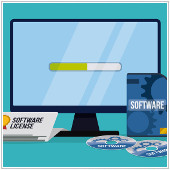According to Statcounter’s April web browser usage report, Google Chrome accounts for over 60 percent of the market share. However, out of all those people how many are employing any of the truly helpful extensions offered in Chrome’s web store? The answer is almost certainly less people than the number of those who have problems […]
 According to Statcounter’s April web browser usage report, Google Chrome accounts for over 60 percent of the market share. However, out of all those people how many are employing any of the truly helpful extensions offered in Chrome’s web store? The answer is almost certainly less people than the number of those who have problems that could be easily fixed by one of these extensions. Read on to find out if one of our favorite extensions could solve any of your biggest browser complaints.
According to Statcounter’s April web browser usage report, Google Chrome accounts for over 60 percent of the market share. However, out of all those people how many are employing any of the truly helpful extensions offered in Chrome’s web store? The answer is almost certainly less people than the number of those who have problems that could be easily fixed by one of these extensions. Read on to find out if one of our favorite extensions could solve any of your biggest browser complaints.
crxMouse Chrome Gestures
Whether you’re switching between a dozen tabs or hopping around the company website, web navigation can start to feel a bit tedious. If you’ve got two monitors, or just a large screen, moving your mouse to the top of the screen to constantly open and close tabs can really slow down your rhythm. One solution is to learn all of the keyboard shortcuts. An even better one is the “crx Mouse Gestures” extension, which allows you to assign mouse gestures to different browser actions.Want to go back a page? Right click and drag the mouse to the left. Want to open a new tab? Right click and drag up. Gestures allows you to customize everything, including the motions themselves. In the options menu you can draw custom gestures, for example a box, and tell crx to tie that motion into opening your Gmail inbox in a new tab. It takes no time at all to incorporate the shortcuts into your browsing habits and significantly boosts your browsing efficiency.
Readability
When it’s time to slow down your browsing and read the most recent election article or a recipe you want to try, the page is often cluttered with social sharing buttons, advertisements and stock photos. With the “Readability” extension all of this gets cleared away with the press of a button, leaving you with a clean, text-only page.In addition to allowing for customization of font, size, and color of your “reader” page, this extension also allows for you to “save for later” and “send to my Kindle”. Readability is a perfect addition for anyone doing a lot of reading who is tired of pages containing more clutter than useful content.
OneTab
After installing the last two extensions you may find yourself with a stack of tabs sandwiched along the top of your screen. Too many open tabs can cripple your available memory. A lot of us open tabs as notes, reminders, and things to check some time in the distant future, which is why you’ll love OneTab. With this extension you can condense all of your open tabs into one page that lists each of them for easy access when you’re ready to return to them.In addition to reducing your memory usage by up to 95 percent, OneTab will let you share your condensed tab list. If you’re working on research for a client, open all the relevant tabs and with the click of a button OneTab will create a site with a shareable link so you can send them to anyone you’d like.
Black Menu for Google
This extension puts all of Google’s sites, services and apps right in your browser menu. After clicking on the icon, a customizable menu drops down with sites like Drive, YouTube, Gmail and more. But these menu items are more than just links to your inbox and videos. When your mouse hovers over the different options it actually opens a miniaturized window, allowing you to view any of your Google services without opening a new tab or window.Instead of opening a new tab, navigating to YouTube and searching for a video, clicking on the Black Menu icon will open a miniaturized search function. You don’t even need to open a new window or tab to watch the video; just click play and when you’re finished, clicking outside of the menu will make it like it never happened. For anyone working closely with Drive, Gmail or Google Calendar, this extension can save a lot of time.
Pop-out Youtube
If you love the Black Menu extension, but need a little more functionality out of your YouTube experience, Pop-out YouTube is the next step. This extension allows you to turn any video into a new browserless window that stays on top of all of your other windows. If you need to transcribe something, one click of the extension will pop out the video and you can click a window behind it and start working away without spending 20 minutes trying to perfectly size the window so everything remains visible.As a quick note, there are dozens of extensions that block ads and those annoying links that overlay your cat videos. Unfortunately, Pop-out Youtube does not include this feature and it’s a good idea to install one of those as well.
Taco
Most of the extensions listed above improve the ease and flow of your internet browsing, but Taco focuses on integration to boost productivity. At its core, this extension replaces your Chrome ‘new tab’ page with a customizable framework for all of your third-party services.With various templates and layouts, you can organize and combine tasks and notes from over 40 services including Evernote, Google, Salesforce, Trello and more. Any time you’re about to start a new project, open a new tab to search for whatever you need to complete it. But before you hit that ‘Google Search’ button, drag the task item into your ‘doing’ lane and off you go. Finished your work and need to check how your home team is doing in their game? Open a new tab, move the task to your finished lane and check the score.
These are just some of our favorite extensions. If you’d like more suggestions or support for anything Google related, we’re here for you -- don’t hesitate to call.

 You may still be on the fence about whether or not to purchase an iPad Pro for your business. While you can find a lot of coverage on Apple’s latest tablet online, you may wonder what actual users think. Today, you’ll discover just that. CIO, a website that delivers the latest news and tips for IT professionals, recently surveyed 11 iPad Pro users to get their feedback. Here’s their thoughts on the good and bad.
You may still be on the fence about whether or not to purchase an iPad Pro for your business. While you can find a lot of coverage on Apple’s latest tablet online, you may wonder what actual users think. Today, you’ll discover just that. CIO, a website that delivers the latest news and tips for IT professionals, recently surveyed 11 iPad Pro users to get their feedback. Here’s their thoughts on the good and bad.
 Not every business owner who migrates to the cloud achieves great results. As much as the service is touted with words like “freedom”, “productivity” and “collaboration”, realizing the full benefits of these words is not a given. So if you’re thinking about transitioning to the cloud, how can you ensure you optimize the technology for your business? Well, it all starts with your attitude before migration. Here are some mental-shifts you should make before getting started.
Not every business owner who migrates to the cloud achieves great results. As much as the service is touted with words like “freedom”, “productivity” and “collaboration”, realizing the full benefits of these words is not a given. So if you’re thinking about transitioning to the cloud, how can you ensure you optimize the technology for your business? Well, it all starts with your attitude before migration. Here are some mental-shifts you should make before getting started.
 Whether you only need a dozen, or a hundred, the process of deciding on and acquiring software licenses can be very frustrating. Many of us had hoped that cloud computing and virtualization would alleviate some of these headaches. Unfortunately, we’re not there yet, which is why it’s important to understand all of your licensing options when deciding on a virtualized environment -- let’s take a look.
Whether you only need a dozen, or a hundred, the process of deciding on and acquiring software licenses can be very frustrating. Many of us had hoped that cloud computing and virtualization would alleviate some of these headaches. Unfortunately, we’re not there yet, which is why it’s important to understand all of your licensing options when deciding on a virtualized environment -- let’s take a look.